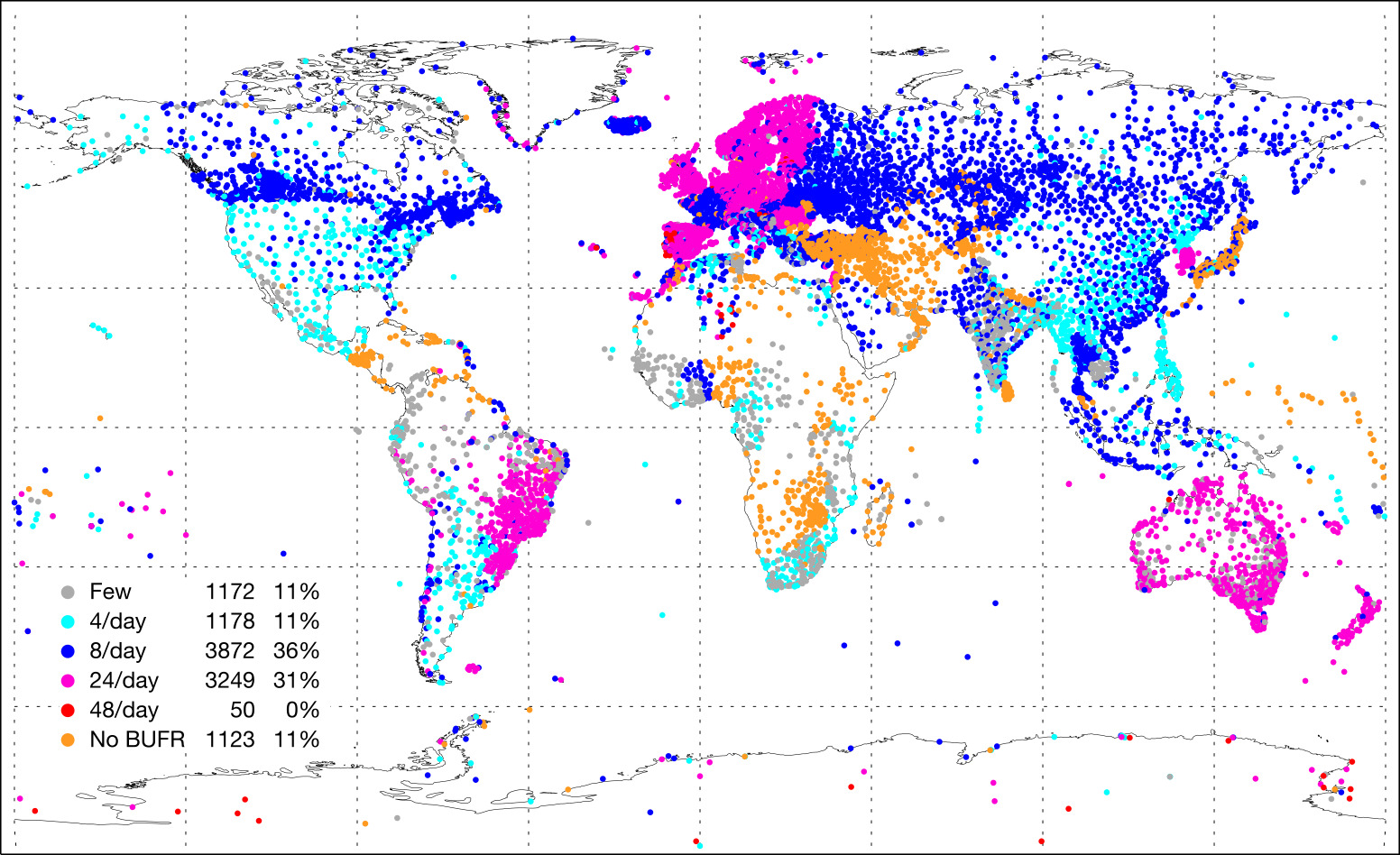Most countries make hourly weather station reports (SYNOPs) for national use, but many only distribute 3- or 6‑hourly reports for others to use. With 4D data assimilation systems, ECMWF and other global numerical weather prediction centres can make good use of higher frequency surface data, and they have been calling for the exchange of hourly SYNOP data. The World Meteorological Organization (WMO) also recognises that more exchange of existing data is a particularly efficient way of improving the global observing system. At a meeting in October, the World Meteorological Congress (representatives from all national meteorological services, the governing body of the WMO) agreed on improvements to data exchange. The Global Basic Observing Network (GBON) was agreed in outline in 2018 and an important detail was added in October: from January 2023, hourly surface reports and high-resolution radiosonde reports should be exchanged globally (https://public.wmo.int/en/events/constituent-bodies/cg-ext2021).

The figure shows the frequency of SYNOP reports currently received at ECMWF. Hourly reports are available from most of Europe and from Australia and Brazil following recent upgrades.
The blue colours show 3- and 6‑hourly reports. Some stations (grey) are even less frequent. The orange dots show that 11% of stations are not providing BUFR reports (the migration from alphanumeric codes was supposed to be complete in 2014). Unfortunately, some countries are providing no surface data at all. A few, notably the USA, provide more data via METARs than SYNOP reports. The impact on the forecast of reports near the end of the data assimilation window is larger than the impact of reports near the start of the window. The exchange of more frequent data is a potentially important step forward.

